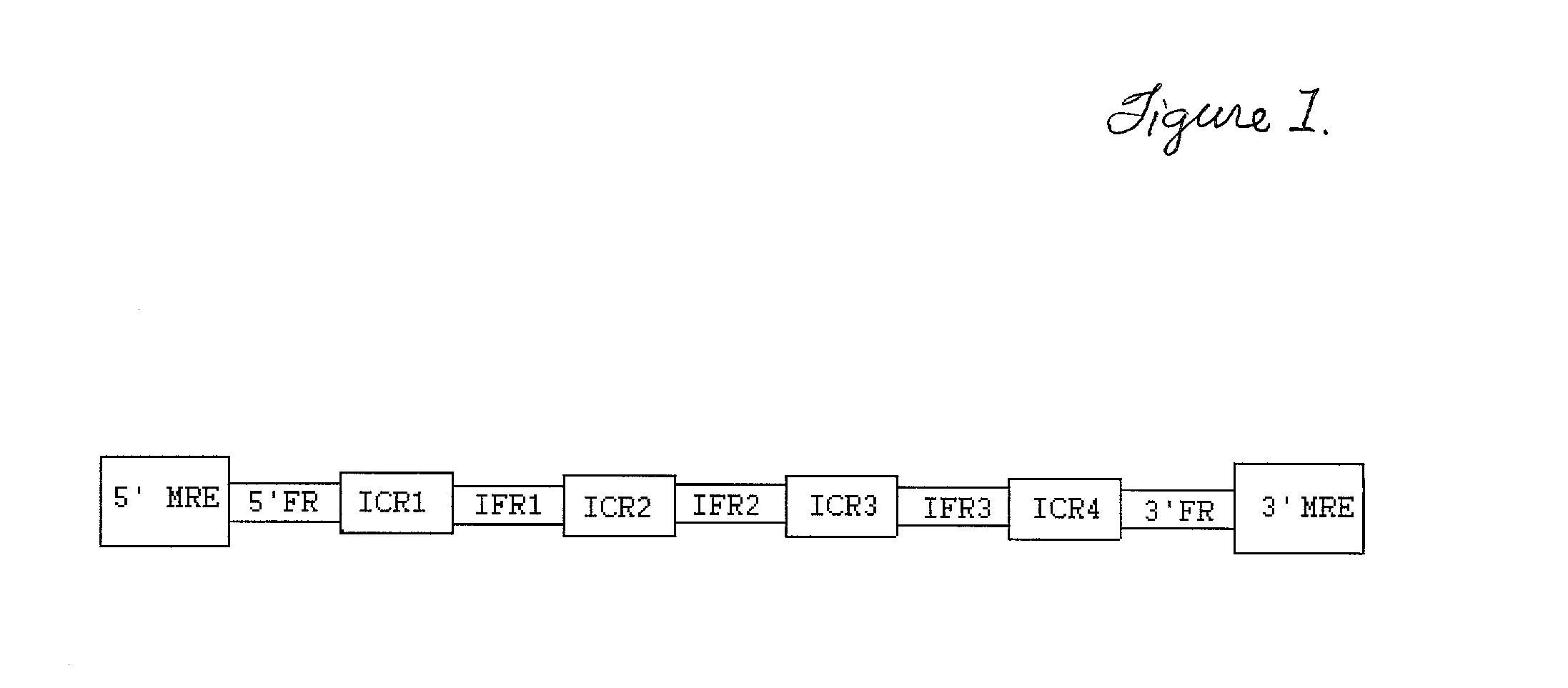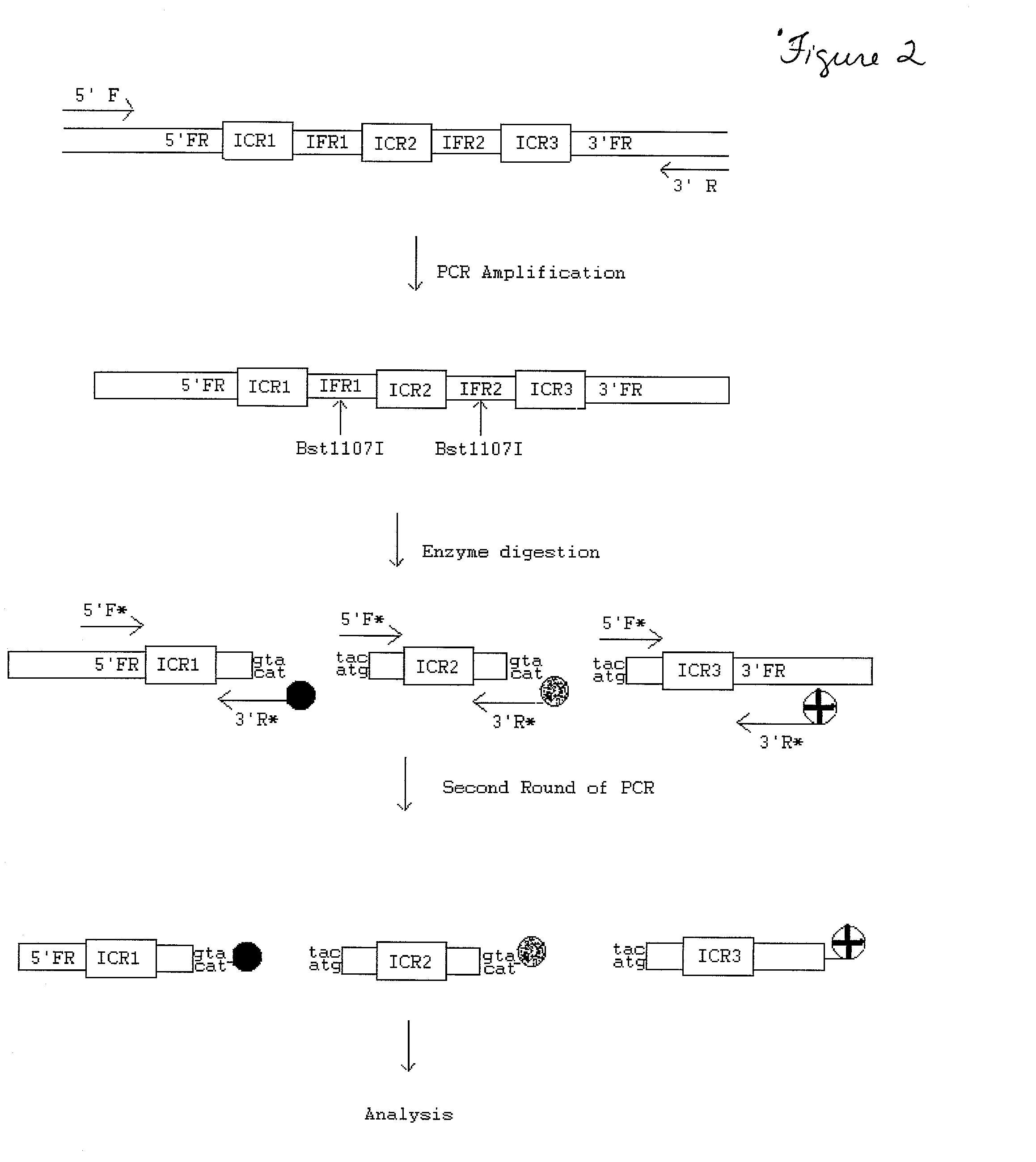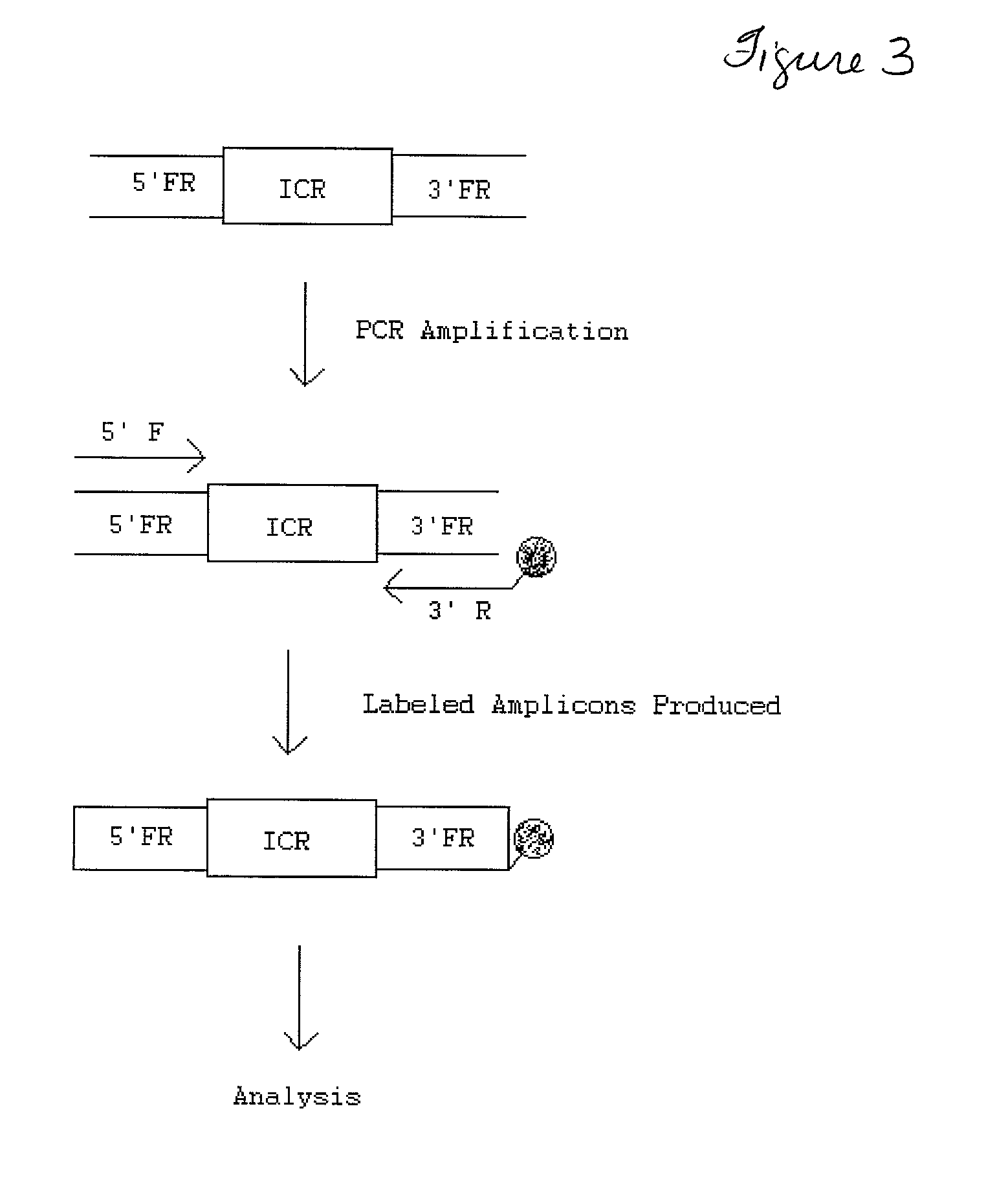Transgenic identification markers
a technology of identification markers and transgenic bacteria, applied in the field of transgenic identification markers, to achieve the effects of increasing the power of discrimination, rapid and accurate electrophoretic analysis of microsatellite loci, and increasing the informational power
- Summary
- Abstract
- Description
- Claims
- Application Information
AI Technical Summary
Benefits of technology
Problems solved by technology
Method used
Image
Examples
example 1
d Synthesis of TIM-1 and TIM-2 genetic markers.
[0095] Two pairs of PCR primers, one to amplify TIM-1 and the other to amplify TIM-2 are developed from 18-25 nt sequences generated by a random sequence software program. Those with melting temperatures of 58-66.degree. C., a GC content of 36 to 57%, a maximum 3' duplex stability of .gtoreq.9, a 3' global alignment score for self-complementarity of .ltoreq.3 and a maximum number of the same consecutive repeated nucleotide of .ltoreq.5 are studied pairwise for compatibility with one another during PCR. Initially, primers with a Tm within 3.degree. C. of each other are matched. These pairs are further selected to have a nucleotide complementarity of <7 and a maximum 3' complementarity of .ltoreq.5 nt. PCR primers thus selected are then screened for amplification of PCR products from DNA of the organism intended to receive their TIM insert.
[0096] Once primer pairs for TIM-1 and TIM-2 amplification are selected, their design is incorporate...
example 2
f TIM-1 and TIM-2 markers into vectors
[0097] Appropriate vectors (e.g. Agrobacterium T-DNA transformation vectors) containing two selection markers (e.g. antibiotic resistance such as kanamycin or hygromycin resistance) one of which is operative in bacteria and one of which is operative in plants, are employed for the transformation of plant cells. A reporter gene (e.g. green fluorescent protein) may also be included. Thus, different TIM constructs can be selected and identified in both bacteria and transgenic plants using linked markers independent of the TIM sequences if desired.
[0098] Adapter-primers containing the appropriate restriction sites are utilized to clone the TIM-1 and TIM-2 markers into appropriate (e.g.T-DNA) vectors. First, the TIM DNA is amplified with the adapter primers, the resulting fragments are gel purified, digested with suitable restriction enzymes (e.g. EcoR1, HindIII, and the like) and ligated into the corresponding sites of the vector polylinker region. ...
example 3
ation of Agrobacterium tumefaciens with TIM vectors
[0099] Recombinant E. coli containing the TIM vector constructs is grown in culture, and plasmid DNA is isolated and purified. Purified plasmid DNA is used for transformation of a suitable strain of Agrobacterium tumefaciens using, for example, electroporation. A. tumefaciens transformants will be selected on an appropriate antibiotic, and confirmed by PCR analysis.
PUM
| Property | Measurement | Unit |
|---|---|---|
| Tm | aaaaa | aaaaa |
| Tm | aaaaa | aaaaa |
| temperature | aaaaa | aaaaa |
Abstract
Description
Claims
Application Information
 Login to View More
Login to View More - R&D
- Intellectual Property
- Life Sciences
- Materials
- Tech Scout
- Unparalleled Data Quality
- Higher Quality Content
- 60% Fewer Hallucinations
Browse by: Latest US Patents, China's latest patents, Technical Efficacy Thesaurus, Application Domain, Technology Topic, Popular Technical Reports.
© 2025 PatSnap. All rights reserved.Legal|Privacy policy|Modern Slavery Act Transparency Statement|Sitemap|About US| Contact US: help@patsnap.com



